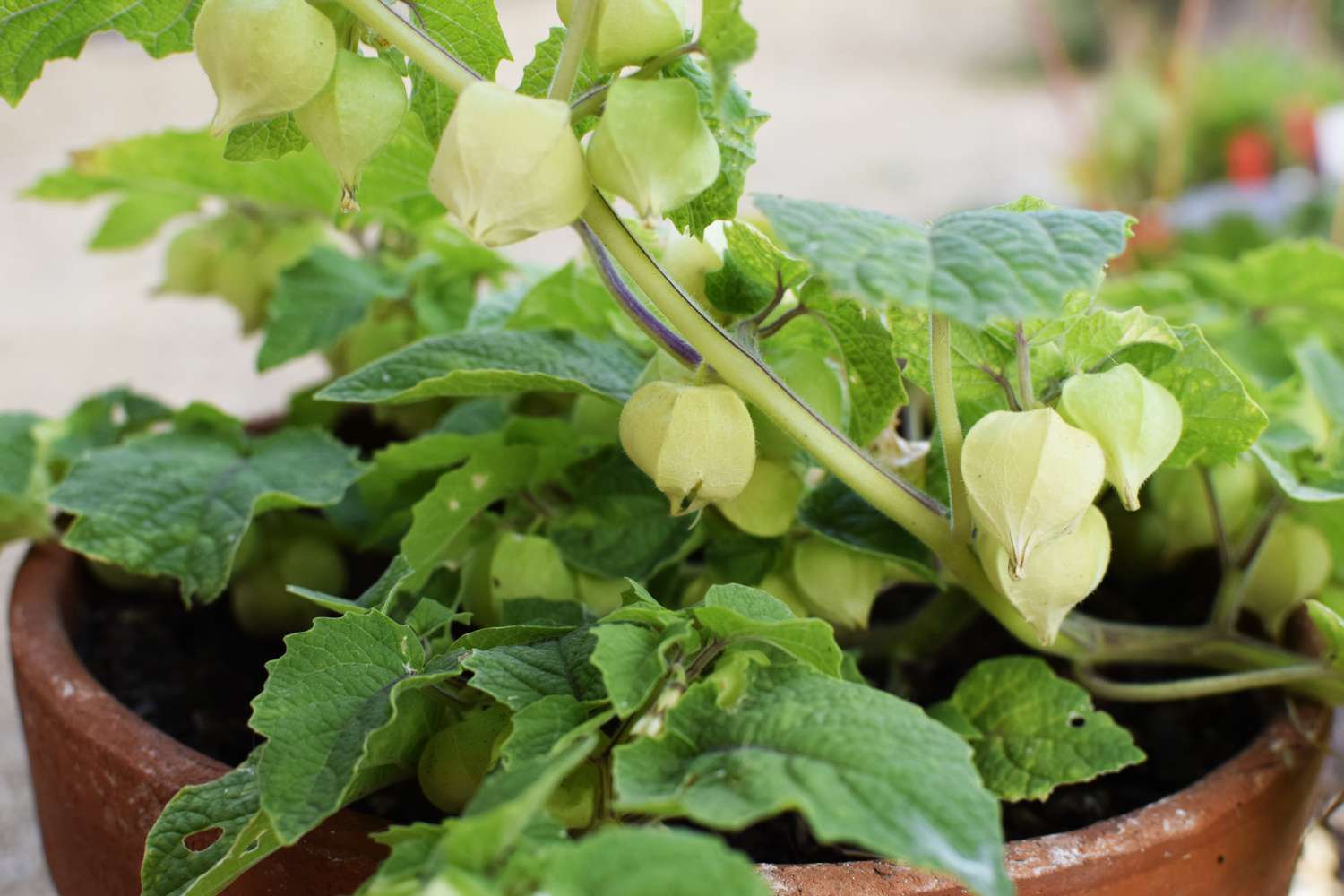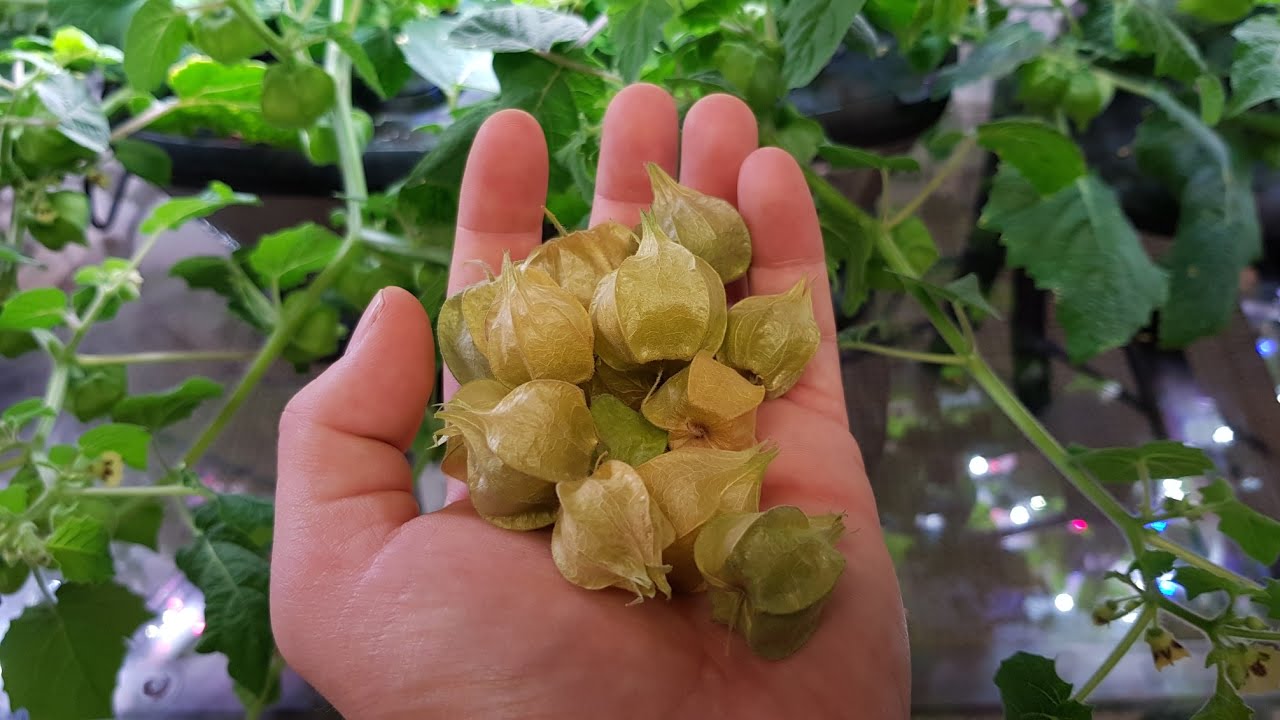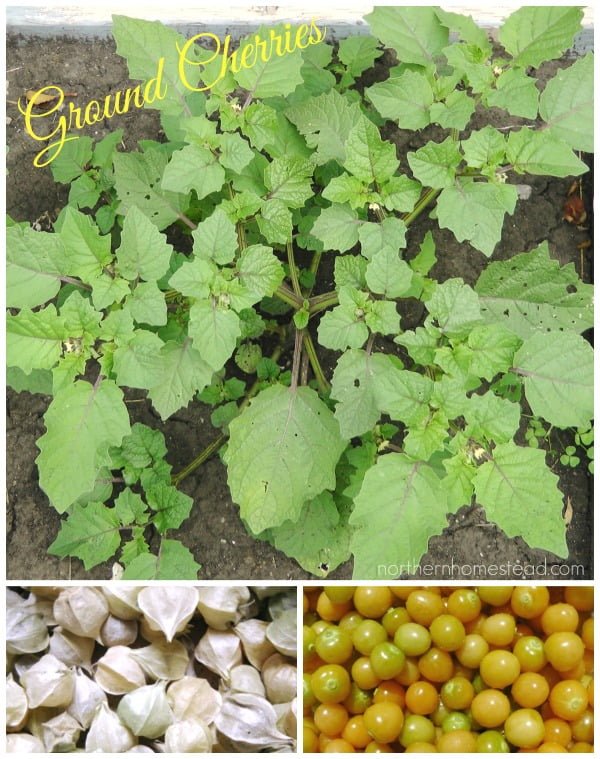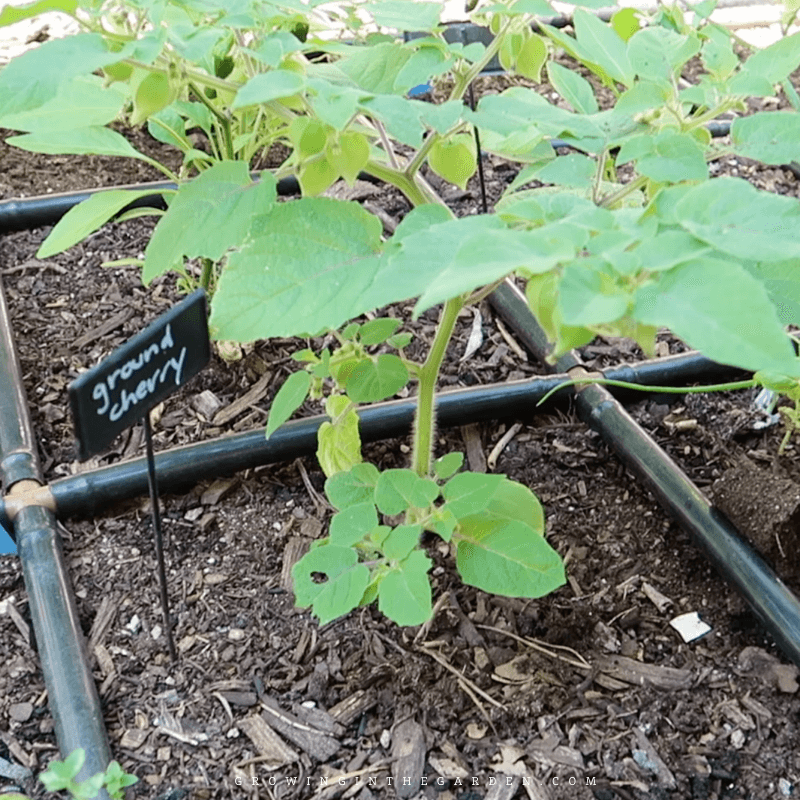Knowing the right time to harvest ground cherries is crucial in order to enjoy their sweet and tangy flavor at its peak. These small fruits, also known as husk tomatoes, ripen on the plant and should only be picked when they have reached full maturity. While the color of the husk is a good indicator, the best way to determine if ground cherries are ready for harvest is by gently squeezing them. If they feel slightly soft and the husk is dry and papery, it is time to pluck them from the plant. Harvesting ground cherries at the perfect moment ensures the best taste and texture, allowing you to savor their unique flavor in various delicious culinary creations.

Understanding Ground Cherries
What are Ground Cherries?
Ground cherries, also known as Physalis, are small fruits that belong to the nightshade family. These unique fruits have a similar appearance to cherry tomatoes, but they grow inside a paper-like husk. Ground cherries are native to the Americas and are popular for their sweet and tangy flavor.
Nutritional Benefits of Ground Cherries
Ground cherries are not only delicious but also packed with nutrients. They are a good source of vitamins A and C, which support immune function and contribute to healthy skin and vision. They also contain potassium, an essential mineral that helps regulate blood pressure. Additionally, ground cherries are rich in antioxidants, which protect the body against free radicals and oxidative stress.
Growing Ground Cherries
Ground cherries can be grown in both garden beds and containers. They prefer well-drained soil and full sun exposure. These plants are relatively low-maintenance and are typically resistant to pests and diseases. It is recommended to start ground cherries from seeds indoors before transplanting them outdoors. They require regular watering and should be fertilized every few weeks during the growing season.
Common Varieties of Ground Cherries
There are several common varieties of ground cherries available to choose from. Some popular options include ‘Aunt Molly’s,’ which has a sweet and complex flavor; ‘Cossack Pineapple,’ which has a tropical pineapple-like taste; and ‘Goldenberry,’ known for its golden hue and refreshing tartness. Each variety has its own unique flavor profile, so it’s worth experimenting to find the one that suits your taste preferences.
Signs of Ripeness
Color Changes
One of the main indicators of ground cherry ripeness is a change in color. As the fruits mature, they transition from a pale green shade to a vibrant yellow, golden, or orange hue, depending on the variety. The color change should be consistent across the entire husk. Avoid picking ground cherries that are still green, as they are likely underripe and may lack the desired sweetness.
Firmness
Gently squeeze the ground cherries to assess their firmness. Ripe ground cherries should give slightly under pressure, similar to a ripe tomato. If the fruits are too soft or mushy, they may be overripe and have a less desirable texture. On the other hand, if they are hard and unyielding, they are likely not fully ripe and may taste less sweet.
Husk Drying
Take a close look at the husks surrounding the ground cherries. As the fruits mature, the husks start to dry out and become papery in texture. The husks should be fully dried and brittle when the ground cherries are ready for harvest. If the husks are still green, sticky, or pliable, it’s an indication that the fruits need more time to ripen.
Husk Splitting
Another sign of ripeness is when the husks start to split or crack open. This occurs naturally as the ground cherries reach maturity. Look for husks that have begun to split along the seams, revealing the ripe fruit inside. However, be cautious not to leave the ground cherries exposed for too long, as they may become vulnerable to pests or molds.

Timing the Harvest
Days to Maturity
Different ground cherry varieties have varying days to maturity, which refers to the time it takes for the fruits to ripen from the day they were transplanted or seeded. It is important to read the specific information provided by the seed supplier or reference reliable gardening resources to determine the average days to maturity for the chosen variety. This information will give you a general timeframe for when to expect your ground cherries to be ready for harvest.
Tracking the Plant’s Growth
Observing the growth of the ground cherry plant can provide valuable insights into the maturity of the fruits. As the plant matures and reaches its full height, the ground cherries will gradually ripen. Regularly monitoring the plant’s growth and comparing it to the estimated days to maturity can give you a better understanding of when your fruits are likely to be ready for harvest.
Observing the Husk Characteristics
Carefully observe the husks of the ground cherries as they develop. Changes in color, firmness, and husk drying are all signs that the fruits are approaching maturity. Regularly check multiple husks to ensure consistency across the plant. It is important to note that ground cherries do not all ripen at the same time, so it may be necessary to harvest the fruits in multiple stages as they become ready.
External Factors Affecting Harvest Time
Weather Conditions
Weather conditions can play a significant role in the ripening process of ground cherries. Warmer temperatures and extended periods of sunlight promote faster ripening, while cooler temperatures and cloudy days may delay the maturity of the fruits. Keep an eye on the weather forecast and adjust your expectations accordingly. Patience may be required if unfavorable weather conditions persist.
Temperature
Ground cherries thrive in warm temperatures, between 70°F and 85°F (21°C and 29°C). If the temperature drops below this range, the ripening process may slow down. Conversely, high temperatures above 90°F (32°C) can cause the fruits to overripen quickly or become sunburnt. Monitoring the temperature and providing shade or protection when needed can help ensure optimum ripening conditions.

Harvesting Techniques
Harvesting by Hand
The most common and practical method of harvesting ground cherries is by hand. Gently hold the fruit between your thumb and forefinger and give it a slight twist to detach it from the stem. Take care not to squeeze or damage the fruit during the process. Harvesting by hand allows for careful selection of ripe fruits and minimizes the risk of bruising or harming the plant.
Using Scissors or Pruning Shears
For larger gardens or when dealing with a large harvest, using scissors or pruning shears can be more efficient. Sterilize the cutting tool before each use to prevent the spread of diseases. Carefully cut the stem just above the calyx, which is the green crown-like structure attached to the fruit. This method allows for quicker harvesting but requires extra attention to ensure that only ripe fruits are picked.
Best Time of Day to Harvest
The best time of day to harvest ground cherries is in the morning after the dew has dried. The fruits are at their juiciest and most flavorful during this time. Avoid harvesting ground cherries in the heat of the day, as the high temperatures can cause the fruits to become soft and less desirable. It is important to handle the fruits gently to minimize any potential damage during harvest.
Removing Ground Cherries from Husks
Once the ground cherries are harvested, it is time to remove them from their protective husks. Gently peel back the husks, exposing the fruit inside. Be cautious not to squeeze or damage the fruits during the process. If any husks are not fully dried or appear damaged, discard those fruits as they may not be suitable for consumption. Rinse the ground cherries under cool water to remove any dirt or debris before consuming or storing.
Storing and Preserving Ground Cherries
Proper Storage Conditions
To keep ground cherries fresh and flavorful, it is important to store them in optimal conditions. Place the harvested and rinsed ground cherries in a single layer on a dry paper towel or clean dishcloth. Avoid overcrowding, as this can lead to bruising and spoilage. Choose a cool and well-ventilated area for storage, away from direct sunlight and other ethylene-producing fruits, which can accelerate ripening.
Optimal Temperature and Humidity
Ground cherries are best stored at a temperature range of 45°F to 50°F (7°C to 10°C) with a humidity level of 60% to 70%. This can be achieved by storing them in the refrigerator. The cool temperature helps slow down the ripening process and prolongs the shelf life of the fruits. Be sure to keep them in a tightly sealed container or a plastic bag to prevent moisture loss or absorption of other odors.
Freezing Ground Cherries
Ground cherries can also be preserved by freezing. Start by rinsing and removing the husks from the fruits. Place the husked ground cherries on a baking sheet in a single layer and freeze them until solid. Once frozen, transfer the ground cherries into airtight freezer bags or containers. Properly frozen ground cherries can maintain their quality for up to a year. When using frozen ground cherries, they are best enjoyed in sauces, smoothies, or baked goods.
Canning or Preserving Ground Cherries
For long-term preservation, canning or preserving ground cherries is an excellent option. Follow a trusted canning recipe that suits your taste preferences and safety guidelines. Ground cherries can be transformed into delicious jams, jellies, or preserves. The canning process involves heating the fruit mixture to kill any microorganisms, sealing the jars, and creating a vacuum seal for long-term storage. Properly canned ground cherries can last for several years when stored in a cool and dark place.

Harvesting Tips and Tricks
Harvesting Regularly
To ensure a bountiful harvest, it is essential to harvest ground cherries regularly. Leaving ripe fruits on the plant for too long not only increases the risk of overripening but also attracts pests and wildlife that may feed on the fruits. Set a routine to check the plants daily or every few days and harvest any ripe fruits. This practice encourages continuous fruiting and maintains the plant’s vitality.
Not Waiting Too Long
While ground cherries naturally fall from the plant when they are fully ripe, it is not advisable to wait for this to happen. Relying solely on ground cherries dropping from the plant can result in some fruits becoming overripe, damaged, or infested by pests. Take an active role in monitoring the plant and harvest the fruits as they meet the signs of ripeness mentioned earlier.
Testing a Few Ground Cherries First
If you are unsure about the ripeness of the ground cherries, you can perform a taste test on a few fruits before harvesting the entire crop. Select a couple of ground cherries that appear to be at the appropriate stage of ripeness and sample them. If they have the desired sweetness and flavor, it is an indication that the rest of the fruits can be harvested. However, if they taste underripe or lack sweetness, allow the remaining fruits more time to mature.
Being Gentle During Harvest
When harvesting ground cherries, it is crucial to handle them gently to avoid bruising or damaging the fruits and the plant. Rough handling can cause the fruits to spoil more quickly. Hold the fruits delicately and avoid excessive squeezing or dropping. It is also recommended to wear gloves to protect the fruits from any oils or residues on your hands. Treat the plant with care, as any unnecessary damage may affect future fruit production.
Harvesting Ground Cherries for Seeds
Selecting Mature and Healthy Fruit
If you are interested in saving ground cherry seeds for future planting, it is important to select mature and healthy fruits. Choose ground cherries that are fully ripe and have developed their characteristic color. Avoid selecting fruits that are damaged, diseased, or show signs of pest infestations, as these may result in compromised seed quality.
Extracting Seeds
To extract the seeds from ground cherries, start by removing the husk. Gently squeeze the fruit to separate the pulp and seeds. Place the pulp and seeds into a fine mesh strainer or sieve and rinse under cool water. Rub the pulp against the screen to remove any remaining flesh. Continue rinsing until only the clean seeds remain. Spread the seeds on a paper towel or a plate to air dry for a week before storing.
Drying and Storing Seeds
Properly drying the ground cherry seeds is crucial for successful seed saving. Spread the cleaned seeds in a single layer on a paper towel or a screen and allow them to air dry for a week in a well-ventilated area. Once thoroughly dried, transfer the seeds to an airtight container, such as a glass jar or a seed envelope. Store the containers in a cool and dark place with stable temperature and humidity levels. Labeled and stored correctly, the ground cherry seeds can remain viable for several years.

Safety Precautions
Wearing Gloves
When handling ground cherries, particularly during harvest, it is recommended to wear gloves. Some individuals may experience skin irritation or allergic reactions when in contact with certain plants, including ground cherries. Wearing gloves can help protect your skin and prevent any potential discomfort or adverse reactions. Opt for gardening gloves made with breathable materials for maximum comfort.
Washing Ground Cherries
Before consuming or preserving ground cherries, it is essential to wash them thoroughly. Rinse the fruits under cool running water to remove any dirt, debris, or residues that may be present on the surface. Gently rub the skin to ensure a thorough cleaning. If desired, a diluted produce wash solution can be used to further sanitize the fruits. Dry the ground cherries completely before storing or consuming.
Checking for Pest Infestations
While ground cherries are generally resistant to many pests, it is still advisable to check the fruits for any signs of infestation. Look for holes, bite marks, or trails left by insects on the outer skin. If any pests are detected, discard the affected fruits to prevent further contamination or damage. Promptly remove any fallen fruits from the ground to deter pests and maintain a clean growing area.
Troubleshooting Harvesting Issues
Premature Harvesting
Premature harvesting occurs when ground cherries are picked before they have fully ripened. This can lead to underripe fruits with less desirable flavor and sweetness. To prevent premature harvesting, carefully observe the signs of ripeness mentioned earlier and resist the temptation to harvest too soon. Allow the fruits to reach their optimal stage of maturity before picking them for the best taste experience.
Overripe Ground Cherries
Overripe ground cherries can become mushy and develop an unpleasant taste. If the ground cherries are left on the plant for too long, they may fall off naturally or become damaged by pests and microorganisms. Regularly monitor the signs of ripeness and harvest the fruits as they reach the desired stage of maturity. If any overripe ground cherries are detected, dispose of them to prevent potential spoilage in the batch.
Mold or Rot
Ground cherries are susceptible to molds and rotting if they are not properly harvested and stored. To prevent mold and rot, ensure that the fruits are completely dry before storing and do not stack them on top of each other. Additionally, inspect the fruits before storing to identify any signs of damage or decay. Any ground cherries showing mold growth or signs of rot should be discarded immediately to avoid spreading to other fruits.
Damage from Pests
Pests such as aphids, fruit flies, or slugs may occasionally pose a threat to ground cherries. Regularly inspect the plants for any signs of pest infestation, such as wilting leaves, visible pests, or damage to the fruits. If pests are detected, take appropriate measures to control their population, such as using organic pest control methods or introducing beneficial insects. Preventative measures like crop rotation and maintaining a tidy garden can also help reduce pest problems.
In conclusion, understanding when and how to harvest ground cherries is essential to enjoy their sweet and tangy flavor to the fullest. By recognizing the signs of ripeness, timing the harvest correctly, and following proper storage and preservation techniques, you can savor the unique taste of ground cherries throughout the year. Incorporate these tips and techniques into your gardening practices to ensure a successful and bountiful harvest of this delightful fruit.



